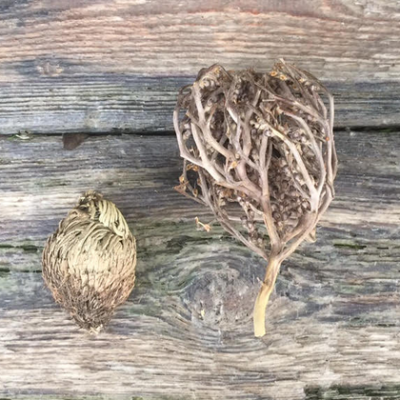ROSE OF JERICHO
Comparison between False and true Rose of Jericho
Comparison between False and true Rose of Jericho
Be warned
False Rose of Jericho, Selaginella lepidophylla
as a member of the spikemoss family, Selaginella lepidophylla may be toxic to cats, so it’s best to play it safe and keep your Rose of Jericho out of reach of your furry friends—or choose a different plant like the Real Rose of Jericho anastatica-hierochuntica, the one on the left in the photo/

| Anastatica hierochuntica
Real Rose of Jericho |
Selaginella lepidophylla
False Rose of Jericho |
| Known as a flower of Maryam and real Rose of Jericho | there are no mentions of a historical name |
| Desert flower, not easy to find | readily available |
| It is very difficult to grow | easy to grow |
| It is rarely available in the markets and the very higher price | is very easy to find all over the world |
| Of paramount importance in many beliefs
|
No special importance – the only importance is its name — derived from the original plant |
| Known by names Mary’s Flower English: Flower of Maryam, St. Mary’s flower, resurrection plant, true rose of Jericho (not to be confused with false rose of Jericho, Selaginella lepidophylla), tumbling mustard, resurrection mustard.
French: Main de Fatma, rose de Jericho. Malay: Sanggul Fatimah, buah zuriat. Persian: Gole Maryum, پنجه مریم , Panjeh Maryam. Turkish: Fatima’nin eli, Meryem bitkisi. Urdu: Maryam booti, Maryam ka phool, Nabi booti. Arabic: Keff Maryam (كف مريم), shajarat Maryam (شجرة مريم), shajarat el-talk, keff lala Maryam, keff lala Fatma, yid Fatma, keff el-adhra, bint Ennabi, el-kemcha, kerchoud.
|
Known by many other names such as Resurrection Moss, Dinosaur Plant, Simpera Viva, Stone Flower and Dordilla |
| In Islamic culture it is called — Kad Fatima – the Prophet’s daughter | So far no evidence has been found for its use in spirituality |
| It looks like dried plant stalks curled into tight balls | looks like a dried leaf ball |

